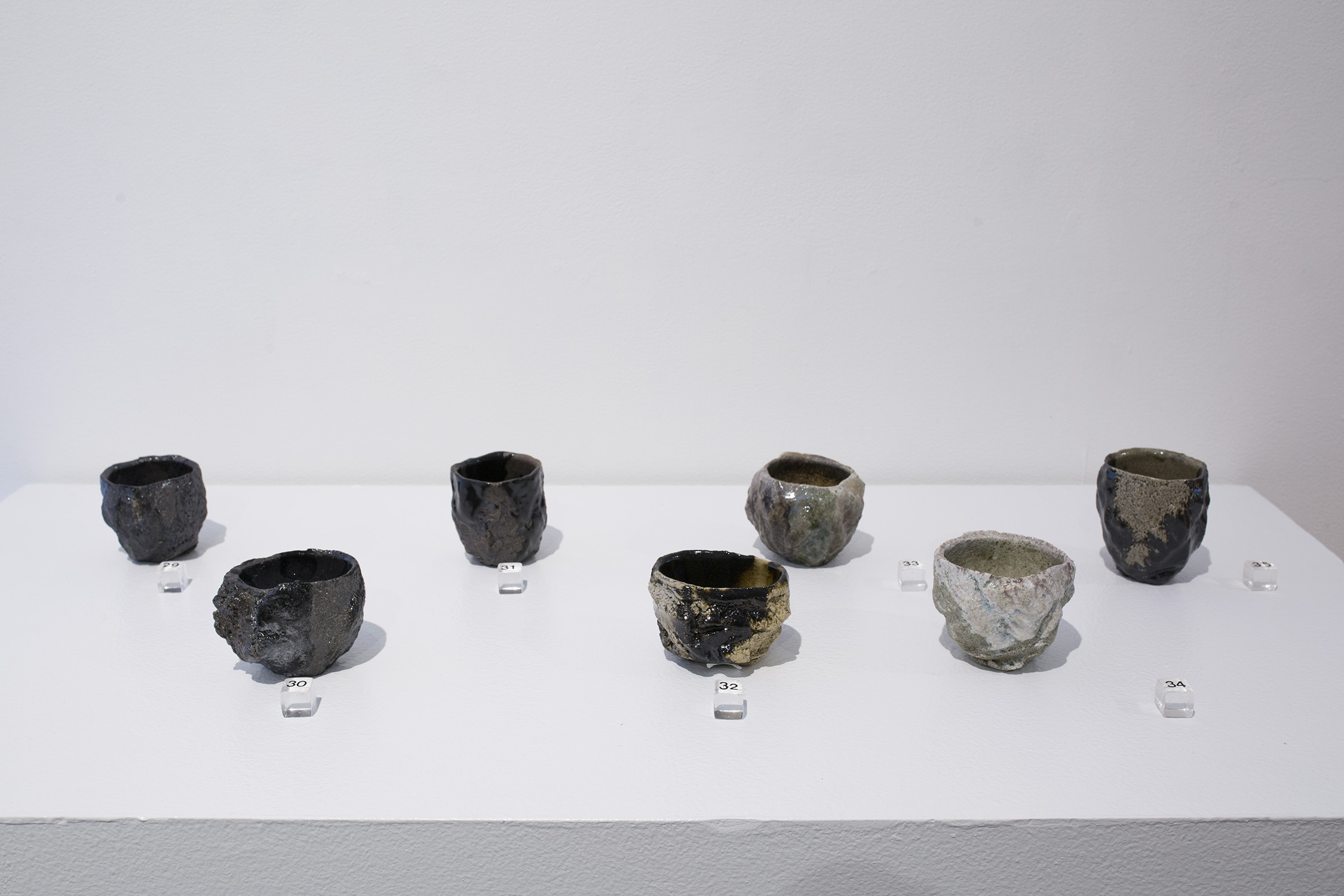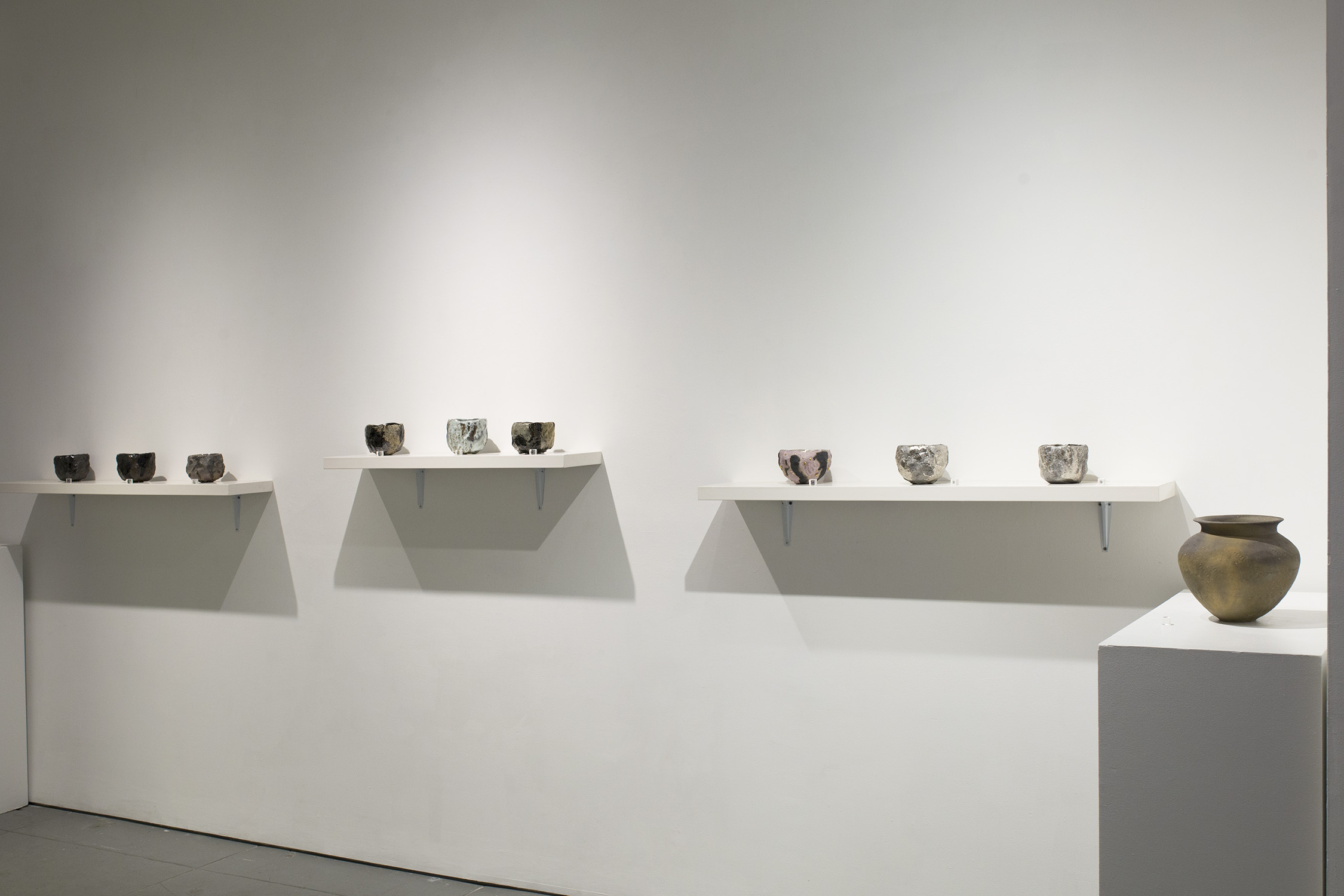OSAMU INAYOSHI
(May 30 - August 2, 2019)
Cavin-Morris Gallery is honored to present a spotlight on new work by the important Japanese artist Osamu Inayoshi. He is part of a generation of artists working in clay who are changing the expectations of the ceramic word by fusing ancient and modern techniques and sensibilities.
We feel he explains it best in these excerpts from his own artist statement:
When I was a child, I loved playing in nature as well as making things by hand. I used to go to the mountains to catch insects and go fishing in the rivers. I was also absorbed in making plastic models. After having had such a childhood, I worked as a businessman and lived a quiet, uneventful life.
The turning point came to me when I was just 23 years old. My grandfather, with whom I was very close passed away. In Japan it is common to cremate the deceased rather than bury them. Then we put the remains in a ceramic jar called a Kotsutsubo, which is then buried. The kotsutsubo is an important place where we spend our last time. The undertaker was about to put the bones of my grandfather in the dull and mass-produced ceramic jar. At that moment, I had a strong uncomfortable feeling; “Is it the best place for him to rest until the end of days?” At that moment I decided I wanted my parents to be in Kotsutsubo which I would make when they passed away.
That gave me the resolve to change my job and go to Seto city, famous for producing ceramic ware, and learn to be a potter. I began to study at a ceramic school in Seto. It was a very difficult transition for me. After graduation, I moved to the Mino area and trained with a focus on Mino-yaki (Mino ceramic ware). There, I discovered a type of ancient pottery called Atsumi-yaki that was produced in the region of my hometown, Mikawa. Unlike Mino-yaki whose production started in 15th century, the production of Atsumi-yaki started in 12th century. The ceramic tiles produced there were used as the roofing tile of the great Todai-ji Temple. I’ve been exploring the essence of pottery and Atsumi-yaki since then.
The themes of my works are “Fusion of the Middle Ages and Modern times” and “Harmonize with nature”. The first theme means applying innovative approaches using not only the tradition and excellent technology of the Middle Ages, but also a technology that utilizes both modern beauty and modern usability. “Harmonize with nature” means respecting nature by using materials in my work which have a low impact on the environment, and value the handicraft industry. I want to represent the warmth as well as the harshness of nature.
Now in Japan there seems to be a tendency to ignore Japanese traditional culture and technology. Although the abandonment of old ideas and methods contributed to the postwar economic recovery in Japan, it leads young people to think that only something new is good, at the expense of traditional ways. While I cannot alter this difficult situation by myself, I do want to offer the public a chance to contact our original culture. So, I study the goodness of the past and am responsible for making pottery which suits modern life. I want everyone to use my works every day. The exhibition will include large tsubos, chawans (teaware) and various types of sakeware.
For additional information please contact info@cavinmorris.com or call us at 212-226-3768.














